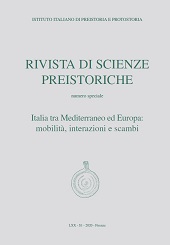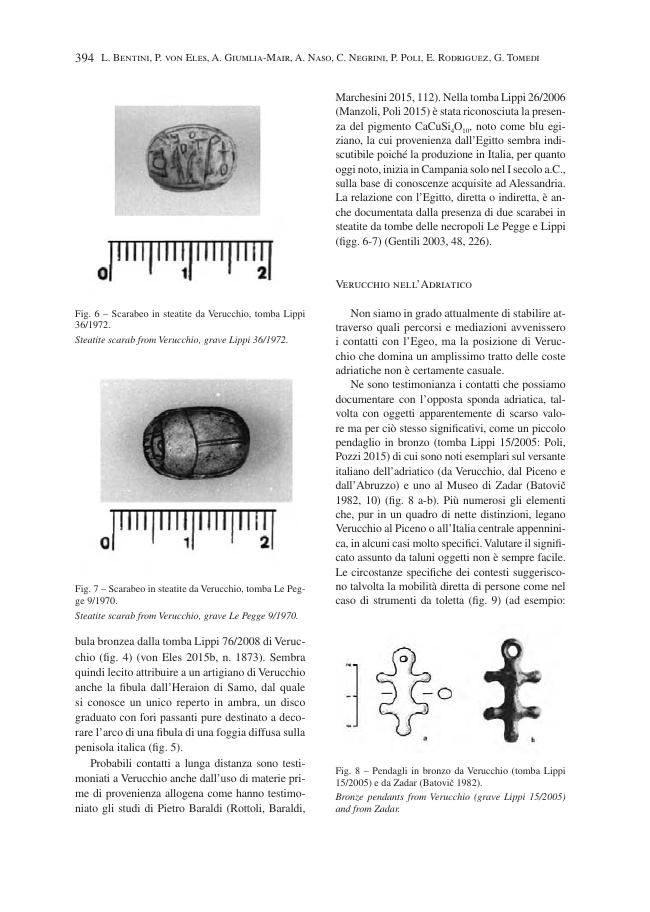Verucchio tra Mediterraneo ed Europa : circolazione di materie prime, prodotti artigianali, persone
P. 389-399
This paper aims to offer a synthesis of the researches carried out by the large team working about Verucchio in the Iron Age on the basis of the excavations in the Lippi cemetery and includes also some results of the field survey carried out by the Innsbruck University in the Marecchia valley: both projects as whole are still unpublished, although some issues have been already addressed in the Verucchio conference held in 2011 and recently published (Immagini di uomini e di donne 2015). The overview of the relationship of the community of Verucchio revealed contacts with Central Europe through the distribution not only of horse harness and bronze vases, but also of the great amount of Baltic amber. In Verucchio the amber handicraft was developed to a very high level, and several classes and shapes of artefacts were enriched by amber.
Uncommon imports from Verucchio, probably connected to the amber trade, have been identified in Greek sanctuaries as the Artemision of Ephesos and the Heraion of Samos (A. Naso). The high percentage of tin in the bronze objects produced at Verucchio allows to hypothesize a central European provenance of the raw metal: furthermore, the preliminary results of the metallurgical analyses made at the Bochum University under the guidance of Th. Stöllner are compatible with the values of the copper from the high Inn valley in Tyrol (A. Giumlia-Mair). Contacts with the Mediterranean world are otherwise revealed by the identification of Egyptian blue, probably used as colouring agent for textiles; the find of a small block of indigotine show that for these purposes also local plants (Isatis Tinctoria) were used (P. Baraldi, M. Marchesini and M. Rottoli 2015).
Further elements reveal contacts with Italian regions as Bologna, Tyrrhenian Etruria, Piceno, Veneto, middle and southern Adriatic: the relationship can be connected either to the gift exchanges between figures of high rank as well as to the geographic mobility of individual travellers. Some metal artefacts (vases, ornaments, weapons) were certainly locally made and had an extensive distribution area outside Verucchio, as it is documented for the iron knives of the so-called Novilara type and for the bronze ribbed buckets (It. ciste a cordoni). Generally speaking the élites of Verucchio did not make systematic use to the import of some specific objects. Among recent finds the grave Lippi 71/2008 is worth mentioning, because it yelded also a biconic matt-painted urn from Southern Italy and an exceptional wooden box containing rests of several metal objects, including also an iron horse bit from Central Europe. [Publisher's text]
-
Articles from the same issue (available individually)
-
Information
DOI: 10.32097/1140
ISSN: 2282-457X



